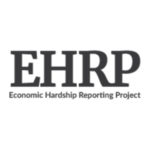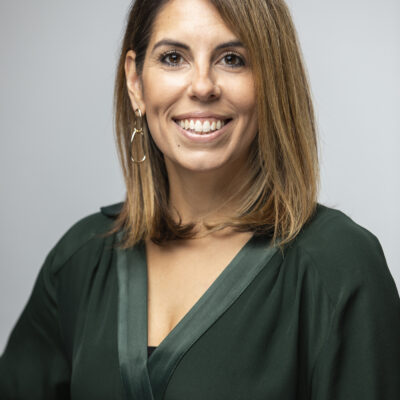
Vince Stehle, our executive director, attends a lot of meetings and conferences throughout the year. Each time, he returns with something new: a connection, an idea for collaboration, a project worthy of more attention.
Last month, Vince attended the 10th annual Reva and David Logan Symposium in Investigative Reporting at the University of California, Berkeley, where we learned of the Economic Hardship Reporting Project (EHRP), a nonprofit news outlet—funded in part by the Ford Foundation—dedicated to reporting on poverty, economic struggle and what they call an “unseen America.” Established in 2012, the small but mighty (two full-time and four part-time employees) operation has been successful in forcing these issues into the national conversation; that’s evident by the major outlets continually picking up their work. Of the 60 stories EHRP produced last year, eight of them were published in The New York Times. Nine of their stories have appeared in The Atlantic since 2012. We reached out to Alissa Quart, executive editor of EHRP and author of several books including Branded: The Buying and Selling of Teenagers, to talk about EHRP’s mission, the great American writer Studs Terkel, and the rapidly narrowing divide between “the poor” and “journalists.”
Media Impact Funders: The Economic Hardship Reporting Project aims to change the national conversation around both poverty and economic insecurity. How have you seen this conversation change over time?
EHRP: We believe we’ve helped shift the public and media conversation away from blaming the poor and the economically struggling. Take the New York Times columnist David Brooks’ words: “Nearly every parent on earth operates on the assumption that character matters a lot to the life outcomes of their children. Nearly every government antipoverty program operates on the assumption that it doesn’t.” The good news is that we see this type of discourse shifting. There’s been a marked improvement: A lot of reporting on inequality is now about systemic failures, like precarious employment, unfair hours, low pay for shift workers, a lack of access to affordable daycare. We also see more pieces on the exploitation of the poor through wage theft, payday loans and the criminalization of poverty.

MIF: EHRP has received funding from a couple of our members—the Ford Foundation currently and the Annie E. Casey Foundation in the recent past. Because inequality and nonprofit journalism are two areas that are popular with funders right now, do you get the sense that you’re getting more foundation attention than ever before?
EHRP: We hope so. Two years ago, Inside Philanthropy wrote a great piece about us urging funders to get on board. We are working to get more foundation and individual donor attention and it is urgent that we get more support, in particular for our very careful editorial process. We think finding more ways to demonstrate our impact will help us in that effort. To that end, we are currently working with the Media Impact Project and other media labs to better collect data about our style of output, “distributed journalism.” We see ourselves as following a distributed journalism model because we are neither the primary publishing outlet nor (in most cases) the sole content creators. We are editorial guides and offer grants to America writers and photographers who are economically marginalized. At the same time, we support and editorially shape the work of some of America’s best journalists so that they can write on subjects that don’t tend to find much mainstream media support.
MIF: And how are you measuring impact?
EHRP: For starters, there is the reach, amplification and engagement that result from our publications. An example of amplification would be John Oliver picking up one of our films, “The Last Clinic,” and the resulting show being the most watched video on YouTube the next day. Or a New York Times columnist writing about one of our articles or videos a week after they are published. There is the impact of the professional and personal growth of our contributors after receiving our continued editorial and financial support. We have writers who were not able to afford their rent or were living on food stamps whose work had dried up, who are now writing again and supporting themselves in the process.
We’ve also seen our impact through broader institutional changes. An EHRP contributor’s piece in Jezebel about a nonprofit’s misguided attempts to cultivate more resilience in low-income communities prompted a rethinking of the community engagement strategy for a collaboration between AFL-CIO and the United Way and how they use the term “resilience” with the poor. Another contributor’s piece in The Nation about a movement to nest churches within public schools in Florida led to the removal of an embedded church-in-a-school; it has also served as a rallying cry for separation of church and state activists. Another EHRP-commissioned work co-published in Salon, about Los Angeles’ Skid Row, was cited by homeless activists as influencing city officials to soften a law preventing homeless people from carrying anything larger than a backpack. An Oklahoma lawmaker apologized about his characterization of Native American alcoholism after another of our pieces on that topic was published. Other responses to our pieces range from Amazon trying (unsuccessfully!) to silence an EHRP critique (co-published with Reuters) of its warehouse working conditions to readers boycotting plasma donation centers that exploit low-income people.
MIF: Do you have any lessons for funders working on poverty and inequality?
EHRP: We hope funders will take a new approach to the popular conception of “the poor,” as the situations causing and surrounding poverty and economic instability are complicated. The poor are not easy to define. Economically struggling people might seem affluent on the surface but not have any money in the bank. EHRP focuses on processes and policies that continually impoverish people and afflict the already precarious while enriching the rest of the population. Anti-inequality efforts need to be aimed at all levels of society. That’s why we cover stories about the top and the middle class, as well.
MIF: What is the biggest obstacle to changing the way people view and talk about economic inequality?
EHRP: The biggest is a deep, usually unacknowledged, prejudice against the poor. A close second is defeatism. Americans have to stop accepting economic inequality as a necessary evil of modern American life. Another element is readers and viewers and the media producers that cater to them tend to offer celebrity news and link bait and shy away from more serious and “depressing” material. We want to show that this kind of subject matter can be engaging and inspiring and even beautiful and amusing at times.
MIF: I was interested to read that EHRP’s reporting is inspired by New Deal reporting projects taken on by the Farm Security Administration and the Works Progress Administration. What about this era appeals to you?
EHRP: The WPA and the FSA supported writers and artists as a vulnerable group; their work was perceived to be as useful to America as the building of infrastructure. These writers and photographers created an amazingly rich archive that both documents a dark time in our history and continues to shape how we see and understand poverty. Their efforts decades ago helped 1930’s progressivism to flower. We want EHRP to offer a similar support for writers and photographers as they illuminate the lives of working people in our era.
MIF: The name that immediately came to mind was Studs Terkel, who had joined the WPA’s Federal Writers Project during the Great Depression. Terkel, of course, is the American author known for his reporting on the lives of everyday Americans. Do we need more Studs Terkels in journalism today?
EHRP: Our founder, Barbara Ehrenreich, slightly knew Studs Terkel. She tells us, “I would do anything to clone him.” As the next best thing, we enable our contributors through our commissions to follow his model. That is, spending the time to immerse themselves in overlooked communities in order to earn the trust of the people whose stories they are telling, then amplifying these voices to ensure they are heard.
MIF: One of the ways you strive to humanize inequality is working with writers and photographers who are financially on the edge, reporting on their own communities. This obviously turns the traditional “observe and report” model on its head. I wonder if this approach—writing about topics that deeply affect you—is needed to report on any entrenched problem.
EHRP: The divide between “the poor” and “journalists” has been narrowing rapidly. We couldn’t avoid using poor journalists if we wanted to. We (and our journos) are writing about issues that we have experienced personally or been close to, or we support journalists and photographers and filmmakers so they can embed themselves in afflicted communities or with struggling subjects, for weeks, months and even years. We seek out, and mentor, journalists who are themselves from marginalized backgrounds, helping them push their stories about their communities and their families into the mainstream media. Take Stephanie Land’s piece about living on food stamps, which was far more successful in communicating the consequences of misguided restrictions put on food stamps than a celebrity trying (and failing) a “food stamp challenge.”
MIF: What are some of EHRP’s most popular and/or most impactful stories? Are there any specific topics that you report on that seem to resonate more than others?
EHRP: Some of our most popular stories have been from writers with an intimate, personal understanding of economic hardship. Melissa Chadburn, who is now EHRP’s community editor, published an EHRP-supported piece called Resilience Is Futile: How Well-Meaning Nonprofits Perpetuate Poverty for Jezebel (mentioned above), which went viral. The United Way and AFL-CIO cited the piece as impactful on modifications to their community engagement strategy.
Frequent contributor Maia Szalavitz’s piece on The Verge, No, Native Americans Aren’t Genetically More Susceptible to Alcoholism, prompted widespread discussion within the Native American community about the degree to which everyone had bought into this myth. It also brought about an apology from an Oklahoma Republican lawmaker for his statement about Native Americans being predisposed to alcoholism.
MIF: Any future projects you’d like to share, or general plans for EHRP’s future?
EHRP: We are now funding more radio and podcasts, including WNYC’s “There Goes the Neighborhood” and are hoping to develop an EHRP podcast as well. We have just supported our first full-length documentary film, Jackson, by Maisie Crow, which will be showing at the Human Rights Watch Film Festival and the Los Angeles Film Festival next month. One of our upcoming video shorts, Safe Parking, documents the lives of families in Santa Barbara who have lost their jobs and are now sleeping in their cars. In the wrong hands, this kind of work could easily feel voyeuristic or exploitative—an exercise in gawking at the poor, but it is shaping up to be a deeply moving, empathetic work, directed by Jennifer Dworkin. I am myself writing a book called Squeezed! about economic inequality based on some EHRP-supported reporting.
Learn more about the Economic Hardship Reporting Project.
Is your media created and/or supported by funders? Want to show it off? Email nina@mediafunders.org with details.
